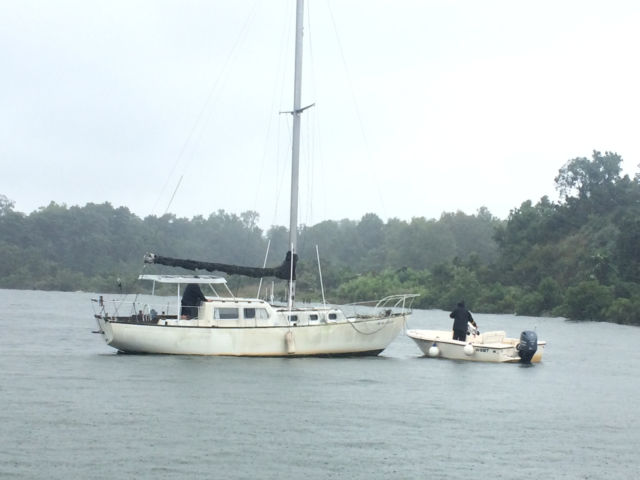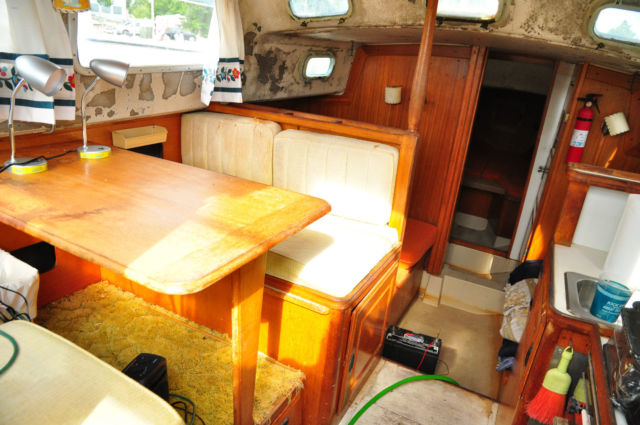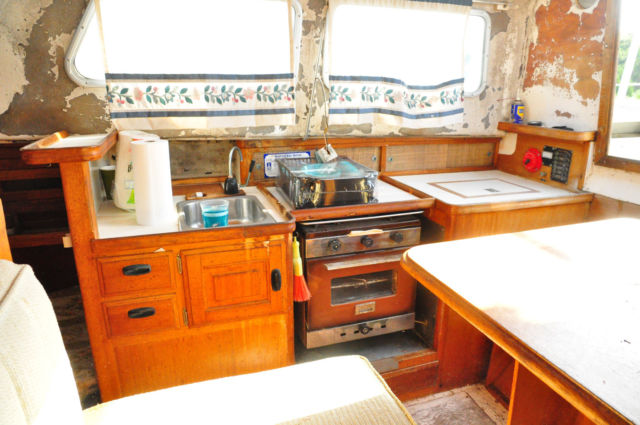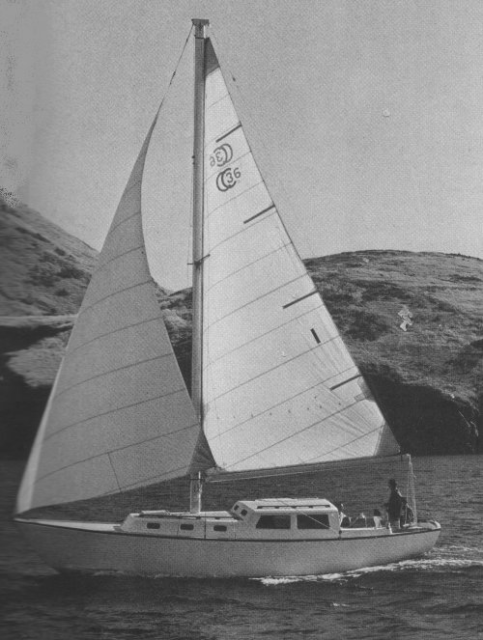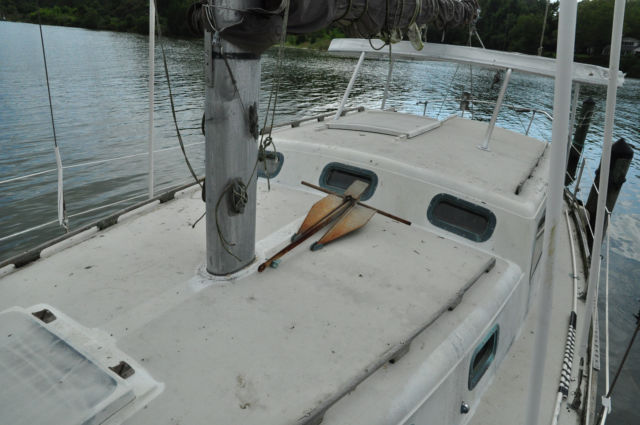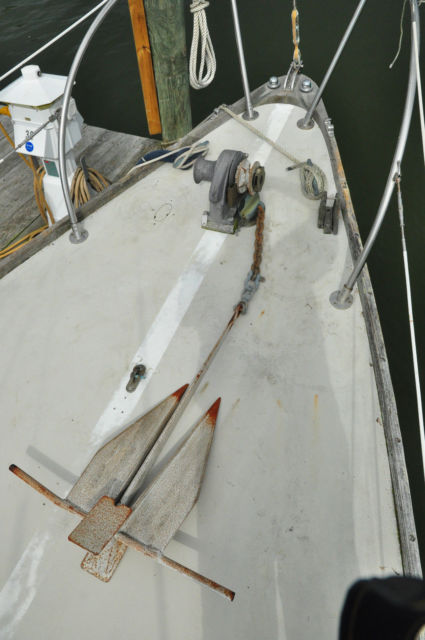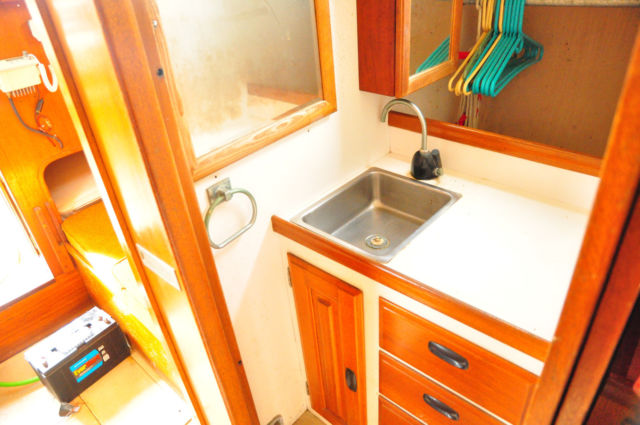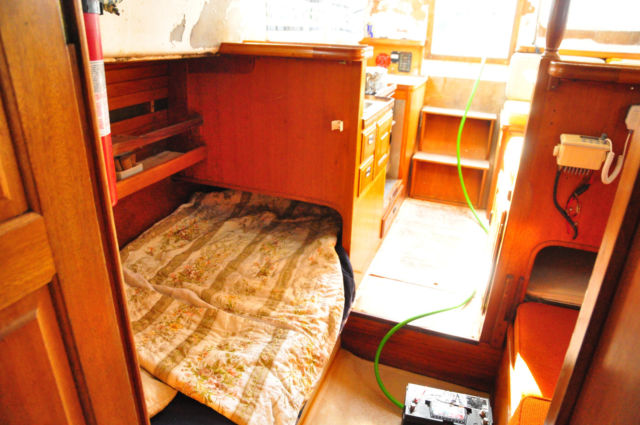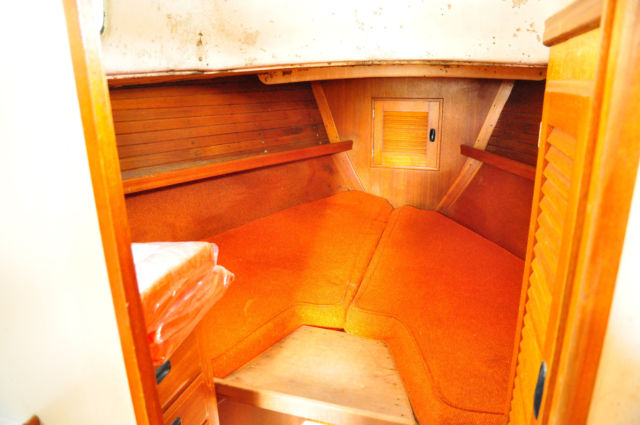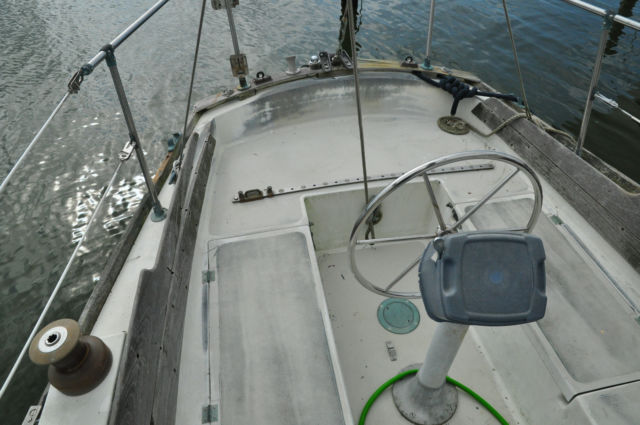PERFECT VESSEL FOR COUPLE TO CIRCUMNATIGATE -GLOBALLY CAPABLE PILOTHOUSE CRUISER
- Make: Designed by Famed Yacht Designer Bill Lapworth
- Model: GLOBAL PILOTHOUSE CUTTER JENSEN-CAL 36
- Type: Cruiser
- Year: 1969
- Location: Solomons, Maryland, United States
Description
Vessel is currently moored at a very nice and friendly "DIY Friendly" Marina at the enormously affordable monthly slip fees of only $150 per month. The boat can stay there as long as you like.THE REVOLUTIONARY DESIGN OF THESE LAPWORTH / CAL 36 GLOBAL CRUISERS MAKES THEM ONE OF THE MOST SOUGHT AFTER BLUE WATER PASSAGE MAKERS FROM THE "CLASSIC PLASTIC" ERA OF FIBERGLASS BOAT CONSTRUCTION.
WHEREAS THE STANDARD CAL 36 DESIGN HAS A TRADITIONAL STYLE CABIN WHICH WAS THE NORM FOR ALL OTHER BRANDS FROM THAT ERA, THE MORE EXPENSIVE AND SOUGHT AFTER "CAL CRUISING 36" (AS IT WAS COMMONLY KNOWN) INVENTED THE PILOT HOUSE INTERIOR DESIGN WHICH IS NOW ALMOST STANDARD ISSUE FOR SAILBOATS BUILT IN THE LAST DECADE.
The reason that this design is now standard is quite simple...it provides a spacious, bright interior with significantly larger interior space than a traditional vessel. It enables easy arm's-length communication between the helm and the galley, so that crew can cook meals or make hot beverages while underway and hand them directly out to the helmsperson. You also have the advantage of being able to stand up with a full view of the horizon (essential for not getting sea-sick on passages) with full-standing-headroom in the galley while cooking, or at the salon table eating, with a bright open view of the sunsets. On nasty weather days you can even have an autopilot do the hard work and keep watch from the comfort of a bright dry interior with 360 Degree views. Better yet, unlike other brands that used Plexiglass for Pilothouse windows, which tend to get milky and hard to see through over time, the Cal Cruising 36 boasts the more expensive option of tempered weatherproof glass windows that have a perfect clear view. To anyone who has ever done global cruising on a vessel where you have to eat sandwiches for a three week passage because no one wants to get sea sick going down into the dark swaying galley to cook a hot meal while underway, this design feature of the raised Pilot House Salon is more valuable than words can really adequately describe.
ATTENTION: THIS IS A SERIOUS LISTING FOR A SERIOUS BOAT. YOUR BID IS A LEGALLY BINDING CONTRACT TO PURCHASE THIS SAILBOAT THE SAME AS A CONTRACT TO PURCHASE REAL ESTATE OR A NEW CAR. BY PLACING YOUR BID YOU AGREE TO THE TERMS OF THE AUCTION AND THE PAYMENT TERMS. PLEASE CONSIDER ALL OF THIS PRIOR TO CLICKING THE PURCHASE BUTTON.
PLEASE READ THE ENTIRE TEXT PRIOR TO BIDDING AND MAKE SURE YOU THAT YOU HAVE AS MUCH INFORMATION ABOUT YOUR PURCHASE AS POSSIBLE. I AM HAPPY TO ANSWER QUESTIONS ABOUT THE BOAT AND YOU ARE WELCOME TO GO AND SEE IT IN PERSON PRIOR TO BIDDING IF YOU LIKE.
PAYMENT IS DUE IN FULL WITHIN 24 HOURS. SEE PAYMENT TERMS.
This is an Auction to the highest bidder. The final price at the end of the auction will be the purchase price regardless of how high or low the bidding goes. The auction closes a bit after 6:30 pm Eastern Time on Wednesday. If you want to win the auction make sure to get your best bid in early or else set the alarm on your phone and tune in for the final few minutes of bidding. Sometimes the final minutes will determine the winner.
Vessel is also for sale on the private market for a fairer price. Seller reserves the right to cancel the listing if the Vessel sells on the private yacht brokers market before the end of the auction.
In ready to sail condition, the few of these vessels that ever come up for sale usually go for $35,000 to $50,000 due to these desirable characteristics (only 48 Cal Cruising 36s were built and probably only half that many are still in active use--which is a far higher ratio than most other brands from that same era). This one needs some weekends of elbow grease and some minor upgrades like a new or used set of sails and new lines and cleaning, painting and sanding and varnishing teak etc. to be back at her full potential, but it is certainly a vessel worthy of investing that effort. And at the end of that restoration you will have achieved a very desirable global cruiser at a fraction of its actual value.
Their very heavy construction and massive almost indestructible cruising fin keels and amazing stability factor give them amazing ability to point toward the wind while also being very comfortable in their sea motion even while pounding through massive storm ravaged seas. Being from the "Classic Plastic" era when Fiberglass boats were still proving themselves to a world of wooden boaters, by modern standards of construction these are considered almost "Overbuilt" Sherman Tanks by modern standards. They may not win a race flat out against the huge modern surf-board downwind boats, but in heavy seas they do not pitch and toss and pound like Beneteaus, Jenneaus, Swans and Oysters.
In practical terms that means you are more likely to be cruising at a very respectable 150 miles per day in the open ocean rather than busting the bragging rights of 200 mile days like the million dollar yachts will, but you will be a lot more comfortable along the way because the vibration and slapping is smoothed out by the much friendlier sea motion. Also, a Cal Cruising 36 can run aground even in fairly heavy seas and usually not sustain much damage other than some scratches on the keel, where the thinner hulled, racing style keel cruisers may have their keels either bent or entirely broken off with catastrophic results from the same incident.
That may not win the Newport to Bermuda race on uncorrected time, but it gives you a lot more peace of mind when you are coming into an unfamiliar and poorly marked anchorage in the South Pacific, a thousand nautical miles from the nearest rescue vessel, to know that your boat itself is sturdy enough to withstand a lot more abuse than most of the other ones out there sailing.
WHO YOU ARE BUYING FROM
We are serious blue water ocean sailors with thousands of miles and many years experience offshore and doing coastal cruising. It is our passion to help other people discover the sailing lifestyle, and especially the more serious cruising lifestyle.
Sailing is typically considered a rich man's sport, and it certainly is if you pay full price for everything and make the necessary investments in proper off-shore equipment and a safe “Blue Water Capable” vessel in turn key condition. However, there are ways to make this lifestyle possible and affordable to middle class people and retirees who dont possess a three million dollar investment portfolio. But doing that properly and safely and knowing where to find your savings and where to “not skimp” is the knowledge that can sometimes make the difference between catastrophe or pleasant exploring once you set out on your adventure of a lifetime. We are passionate about sharing our knowledge and helping people discover this amazing lifestyle...and doing so in a way that keeps them safe, happy and in the black.
We already have our keeper boat and don't need another one, but every once in a while we discover through our friends and connections at boatyards, marinas and marine insurance companies a boat that is a terrific bargain that isn't getting the love and attention and exercise that it deserves, and we will try to help find a new home for it. This is one of those rare boats.
If you want to call me and discuss your cruising or sailing plans and dreams and whether or not this boat might actually work to suit your needs I will be happy to speak with you and give you my honest opinion about the feasibility of your plans and whether this vessel might or might not work for you. Feel free to call and chat.
WILLIAM AT 970 319-4361.
IF A PHYSICAL INSPECTION IS A REQUIREMENT FOR YOU PRIOR TO MAKING PAYMENT, THEN INSPECTIONS SHOULD BE MADE PRIOR TO THE CLOSE OF THE AUCTION AND PRIOR TO PLACING YOUR BID.
CLEAR TITLE/USCG CERTIFICATE OD DOCUMENTATION IS AVAILABLE.
MOVING A BIG SAILBOAT WITH A BOAT MOVER CAN BE VERY EXPENSIVE. OFTEN $4 OR MORE PER MILE. I AM HAPPY TO HELP YOU UNDERSTAND THE OPTIONS IN THAT REGARD IF YOU WANT TO GIVE ME A CALL. By far the most affordable way to move a sailboat is by water, so please consider whether your location is accessible to move the boat by water or whether you will need to pay the higher cost of having it moved by truck and trailer. Also consider the time it will take to prepare for a voyage and whether your sailing skills or those of friends or other sailors you might find through the yacht crew websites are at the level necessary to make a safe voyage from the ocean where the boat is located to your home port.
AND NOW IF YOU AREN'T YET TIRED OF READING A FEW INSIGHTS TO SHARE ABOUT BUYING BOATS AND CHOOSING THE RIGHT BOAT FOR GLOBAL CRUISING:
A little about what we do:
Our passion is to assist folks who are making a transition from day sailing or coastal cruising to becoming full-time live-aboard world cruisers. We also assist new sailors who are just getting into the sport of sailing by advising them on how to develop their skills and how to make plans to pursue the dream of cruising and world traveling full-time.
We have extensive contacts and resources for finding good world cruising boats at far below their fair market value, and occasionally we discover an amazing neglected vessel at a price that we know may enable a cruising family or a retired couple on fixed income the ability to pursue the dream of cruising without the sort of means and savings normally associated with pursuing this lifestyle.
In those cases, like this boat, we work to try and find a new home for a good “below market value” boat, with people who will fully restore the vessel, and hopefully use it for the serious cruising that the boat was designed for.
There are many aspects of life where experience really matters, but none so much as global cruising. When you are planning to take a small boat across vast oceans and visit foreign ports of call on your own terms you must truly learn to become Master's of your Own Destiny. It doesn't matter how wealthy you are or how talented you are at managing large organizations or companies with dozens of staff people.
When you are on a boat in the middle of the ocean, the choices you have made, the choices you will make and your own internal skills and the undeniable truth of how well or poorly you have planned for your expedition, are the factors that will determine whether your experiences become a positive adventure or a frightening (or even life threatening) catastrophe.
When you are looking at a boat parked peacefully at a dock or on jack stands at a boat yard, you will be tempted to judge it based on whether the lines are nice and whether it is pretty or ugly and whether it is new or old and well kept or run down.
The ocean however, operates according to immutable laws of physics. The ocean does not care whether it sinks a pretty boat or keeps an ugly one floating. It does not care whether you are a skilled sailor with dozens or years experience under your shade hat or whether you are an amateur on your first weekend pleasure cruise. You will be served exactly the same conditions of wind and waves whether you were born wealthy or if you were raised in a cave by baboons.
The only control you have over these situations is knowing when to sail and when not to sail, and you can prepare yourself so that when the wrong situation strikes, if it ever does, you are skilled and prepared to deal with it and have a vessel that is prepared to handle the same.
For people who are wanting to go cruising full-time, or who want to go from being pleasure sailors to competent seamen and seawomen, choosing the right boat is the first and sometimes ultimately most important decision of their nautical lives.
Of course you can always sell or trade a boat and then buy a different one, but still the choice of each boat will influence the experiences you have and it will determine in many ways the capabilities or limitations of what you can or can't do while you have that boat for your home—even if it is only home for a few weekends here and there.
There are many nuances and subtleties to sailing, as well as to each individual vessel. A boat that may be just exactly perfect for one sailor or family of sailors, may be completely the wrong boat to suit another person's dreams.
By nature, boats require a lot of maintenance and upgrades, and if you are someone who wants all the possible bells and whistles, boating can be a very expensive occupation.
However, there are also ways to save a lot of money and still pursue the dream effectively and safely and create a new floating paradise for yourself. But each person or each couple's needs are different.
There is no such boat as a boat that is not a project boat.
Long before we were married, when my wife was only 12 years old, and her father (a relatively wealthy man at the time) purchased a brand new Beneteau 46 for the family to live on for years and to cruise the world on, the first thing he did to a brand new half million dollar boat was to spend another $27K on equipment upgrades, new electronics installations and custom modifications.
The reason he did that is because no boat, no matter how shiny and brand new, is exactly right for everyone's individual tastes and needs, and no boat comes straight from the factory completely ready to do anything other than Wednesday afternoon beer can races.
I often get asked by people who are shopping for a used boat to go cruising the world, “Is this boat ready to cross the Atlantic?” or “Does it need anything before it is 'Ready to Sail.”
The very nature of that question is a showcase of their naivety. Even if the answer were “Yes, the boat is ready.” (which would be impossible to have any boat ready unless you have spent thousands of dollars on a cruising chandlery and provisioning service ahead of time) the greater question is “Are such ignorant sailors who need to ask such questions ready themselves?”
Even if they had the absolutely perfect boat, prepared ahead of time by die-hard professionals to get it ready to cast off the lines and sail to points distant and exotic, would the sailors know where everything is at on the boat and how to operate those systems and how not to break them with ignorant mistakes or how to fix them once broken? And if they knew all those things, would the boat be equipped with the necessary repair tools and supplies as part of the process of getting it ready to sail?
So all these are big questions, and the only easy answer is that any sailor must become intimately familiar with their vessel prior to making long voyages beyond sight of land. The easiest way to become familiar with a boat so that it is not a stranger but rather a trusted old friend is to do a lot of weekend coastal cruising with it, while you work all the bugs out. Also, the more projects and upgrades you do yourself the more familiar you will be with how they work, how to maintain them and how to fix them again if anything every goes wrong. To depend on the expertise of professionals left behind in a port in a distant country you cleared out of months ago is only to invite future disaster...and its also much harder on the wallet.
So any time you can add to your own skills and knowledge of your own boat by doing your own work, or hiring a professional to help you do it yourself, you are preparing yourself for future success as a cruiser.
Any boat, even a brand new boat, will have things about it that you want to change or upgrade or move or install prior to making long voyages.
The better questions to ask are:
“What is the proper amount of maintenance and upgrades that I will make to my vessel prior to setting sail?
How many things need to be changed or fixed before I leave the continental US?
How many projects will I work on, as little projects along the way, when I have a slow day at a boring anchorage and there are no cruiser parties to attend and no interesting conversations of the side channels of the VHF.
How many projects are absolutely vital to get accomplished before I begin actively using the boat as a full time residence and a floating RV that can sail to any country with a coastline?”
How many projects do I want to tackle myself if it means I can save literally tens of thousands of dollars on the purchase price of a boat, and how much more ultimate value do I get for my money by buying a larger or more seaworthy boat with a few bigger projects to tackle than if I buy a smaller or more flimsy boat that is cleaned up nicer and has fewer problems to address. (Remember the ultimate cosmic law of boating – even if you can't see any problems at all with a boat, and no projects needing doing, as soon as you own it and begin to sail it, you will start to find those quirks and bugs) So don't fool yourself into believing that you can simply buy a shiny new boat from a broker at full market value, or even by paying more than boat blue book value, to avoid ever having to make repairs or upgrades.
Any experienced sailor or boating professional other than someone selling fancy new boats will admit to you that there is no such boat other than a “project boat.” The only question is “What are the projects and how much money will I save by doing them myself versus hiring someone else to complete them?”
Every boat that I have ever bought or ever sold, which is now many dozens of them, had varying degrees of things needing to be improved about it. Even the brand new boats straight from the showroom floor or boat show sales dock will need bottom painting and new zincs and fuel cleansing treatments and oil changes and manifold and riser inspections within a matter or months of casual weekend use.
The longer any boat sits without the proper level of loving regular maintenance the faster it will deteriorate, and tiny 15 minute projects will turn into hour-long projects and hour-long projects will turn into day-long or week-long projects due to continuing neglect.
The quality of the build is also important. A cheap boat will have cheap boat problems, and it will have serious issues far faster and more frequently than a very well built boat from an esteemed yacht designer and builder even if the better boat looks worse initially.
In many ways you are better off to buy an older and more well regarded vessel in worse “first impressions” condition than to buy a shiny and well kept cheaper new boat. In the long run the better boat will cause far fewer headaches once you have it restored fully and you are taking care of it yourself, whereas the cheap but glossy boat may still look new and shiny for years, but begin having serious and costly problems that cannot be seen even while it still looks great in Facebook boat pictures.
Boating is like riding a horse or driving a high performance sports car. You always have to be involved in the life of your boat whether you use it frequently or not.
But this is not a bad thing, because it is part of the pride of ownership, and the regular maintenance and upkeep and small projects is what enables you to avoid the big ones or to at least know which big ones you need to do sooner and which ones can wait till later.
--
As you will guess by now, I'm a bit of a philosopher sailor when it comes to helping folks find just the right boat to serve their needs.
I am currently writing a book on that very topic which will be called, “The Seven Questions of Cruising (or) the Seven Questions you should ask yourself before buying a Boat.” Here is a quick preview of the questions you should be trying to answer from the introduction to my new book.
--
When you go to buy a boat, especially if it is your first boat, there are a lot of decisions to be made and hard choices to figure out.
Before you begin searching for the correct vessel to serve your needs, you need to first ask yourself, (and your cruising partners/ spouse etc) some important questions which will help you immensely in the quest to find the perfect small ship to suit your needs.
Question # 1- Where do you want to sail to (now and also possibly in the future)?
#2 – Who might be going with you and/or who might want to visit you and stay on the boat with you once you get to that exotic foreign port (if global cruising is your goal) or that incredible weekend getaway spot (if weekend cruising is your thing).
#3 – How much do you want to spend on this adventure called boating/sailing/?
Also, how much “can” you afford to spend if you happen to take a wrong turn with the adventure and “need” to spend more money to fix a problem or get yourself or your stalwart side-kick (your boat) out of trouble?
#4 – How handy are you? (i.e. - Are you someone who naturally takes pride in your ability to figure it out yourself, or are you the person who would rather call an “expert” and pay them to solve whatever problem you are having?
#5 – How much time do you have to save yourself money, because in sailing, as well as in life in general “time often equals money.”
#6 – Are you a weekend warrior and/or charter sailor, or do you want to cruise full time?
#7 – Do you care more about Getting There or more about “Being There” once you have arrived?
Thanks, William 970 319-4361
Payment due within 24 hours after close of auction via Paypal or Cashiers Check Counter Deposit with managers receipt as proof of payment at Wells Fargo Bank or US Bank. If you are the high bidder at the close of the auction please call me right after auction closes to discuss the details of the transaction & tell me what name/ address you want on the Bill of Sale. Vessel comes with CLEAR MARYLAND TITLE.
| C. WilliamLapworth |
| 1919-2006 |
| |
| Excerpts from an interview conducted in 2004: William "Bill" Lapworth was perhaps the foremost West Coast Naval Architect in the post World War II period. Born in Detroit, Michigan, he attended and graduated from the University of Michigan with a degree in marine engineering and naval architecture. After serving in the navy during World War II, Lapworth settled on the west coast and became partners with Merle Davis who had a yacht design office in Los Angeles. Davis died less than a year later. At first, Lapworth paid the bills by doing surveying work. Soon he was designing a series of light displacement racing sailboats that began to win or place highly on the East and West Coasts, beginning with Flying Scotsman and Nalu II, 46' -- a four time Class C Transpac race winner and first overall in 1959. Next came the 50' sloop Ichiban, second overall in the 1961 Transpac. By 1958, more than 70 of the wooden L-36' sloops had been built; but, by then fiberglass was becoming the material of choice. All this attracted the attention of boat builder Jack Jensen who, one day walked in to Lapworths office and, with a handshake, was to form one of the most successful relationships in yachting history. The first boat boat for Jensen was a 24 footer which Jensen proposed to be called the Lapworth 24. But Lapworth felt that since he had previously designed a 24 footer for someone else, a new name was called for. According to Lapworth, this is when they decided on the name 'Cal' boats. Together, Lapworth and Jensen produced thousands of boats including the Cal 20 (the most successful with more than 1,900 boats produced from 1961 to 1972), 24, 28, 29, 30, 33, 34, 36, 39, 40, and 46. The Lapworth/Jensen association continued until the Jensen's death in 1980. In is later years Lapworth kept his own Cal 46 which he said was the favorite of all his designs. |
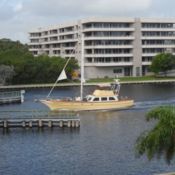 john alden motor sailor perfect live aboard capable of long range cruising
john alden motor sailor perfect live aboard capable of long range cruising
Make: JOHN ALDEN
Location: Pompano Beach, Florida, United States
 sailing vessel reduced reliable ready gulf 32 pilothouse sloop
sailing vessel reduced reliable ready gulf 32 pilothouse sloop
Make: Gulf
Model: 1984
Location: Alameda, California, United States
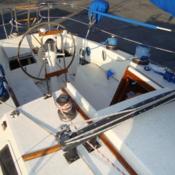 No Reserve FAST CAPABLE PACIFIC OCEAN CRUISER- SPACIOUS INTERIOR -Wheel Steering
No Reserve FAST CAPABLE PACIFIC OCEAN CRUISER- SPACIOUS INTERIOR -Wheel Steering
Make: CF 37
Model: 1978
Location: Venice, California, United States
 1999 53' Navigator Yacht Boat Trawler Cruiser Pilothouse - Excellent Condition
1999 53' Navigator Yacht Boat Trawler Cruiser Pilothouse - Excellent Condition
Make: Navigator
Model: 1999
Location: Murrells Inlet, South Carolina, United States
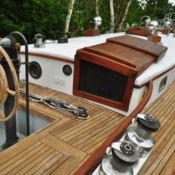 No Reserve -True Auction WORLD'S MOST PERFECT DESIGN ATKINS 40 FT GLOBAL CRUISER
No Reserve -True Auction WORLD'S MOST PERFECT DESIGN ATKINS 40 FT GLOBAL CRUISER
Make: CECIL M. LANGE -CAPE GEORGE YACHTS 40
Model: 1984
Location: Puyallup, Washington, United States
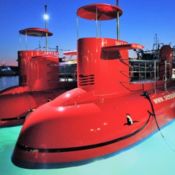 semiSUBMARINE vessel
semiSUBMARINE vessel
Make: Agena Marin
Model: 2018
Location: Biograd, Croatia, Republic of
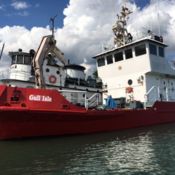 EXPEDITION VESSEL - MAKE OFFER !
EXPEDITION VESSEL - MAKE OFFER !
Location: Sault Ste Marie, Ontario, Canada
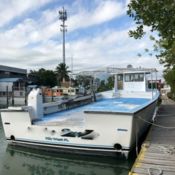 Bonner Boats 65 Commercial Fishing Vessel
Bonner Boats 65 Commercial Fishing Vessel
Make: Bonner Boats 65 Commercial Fishing Vessel
Location: Brooklyn, New York, United States

